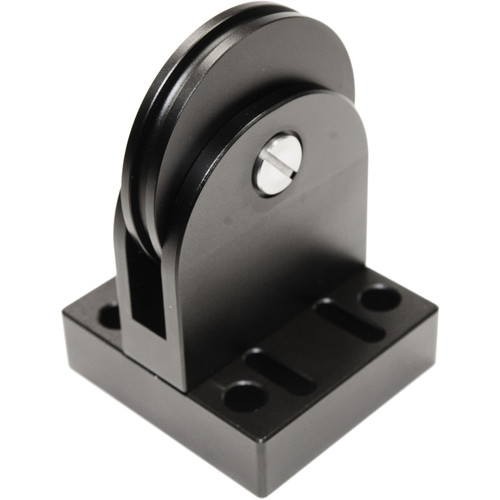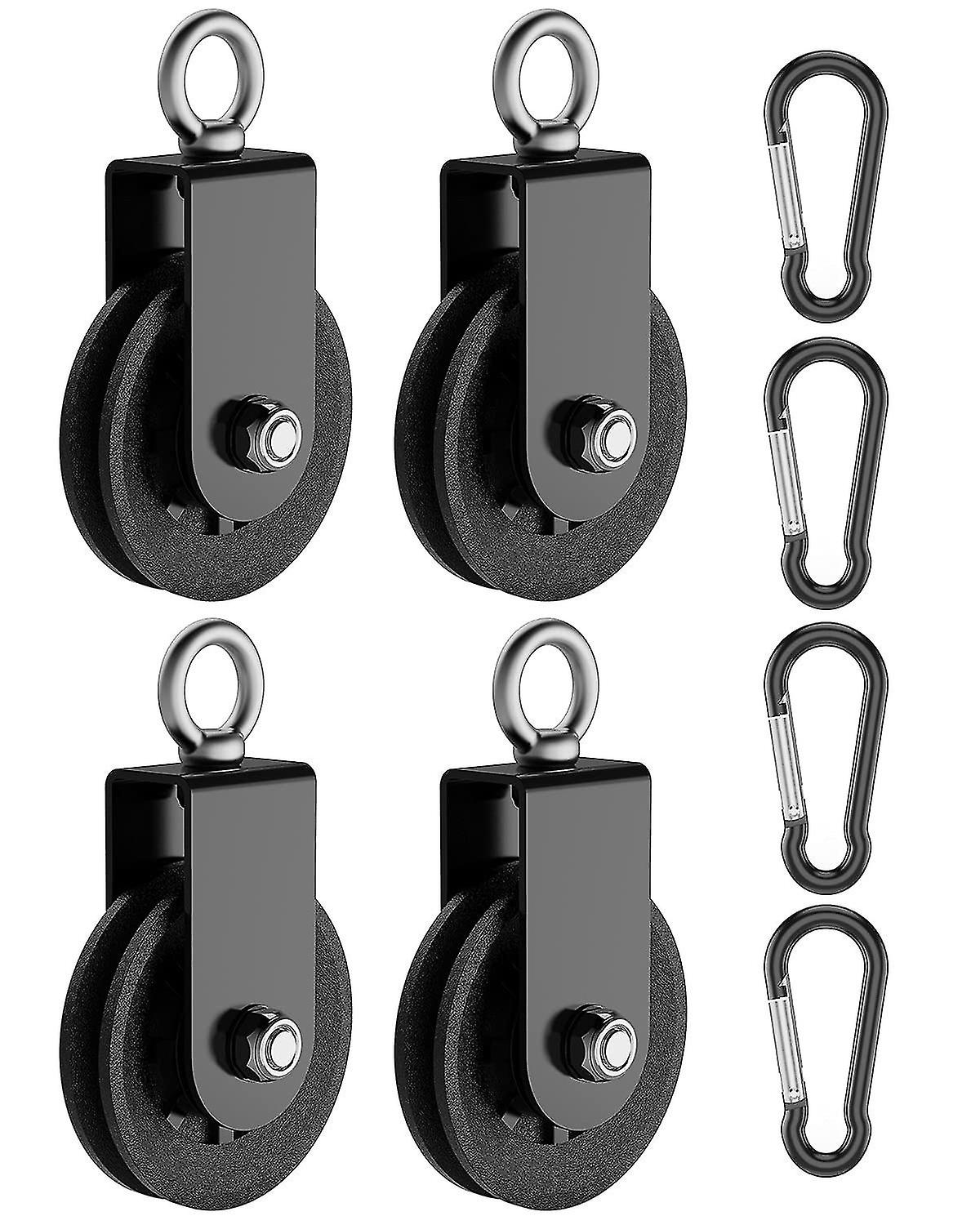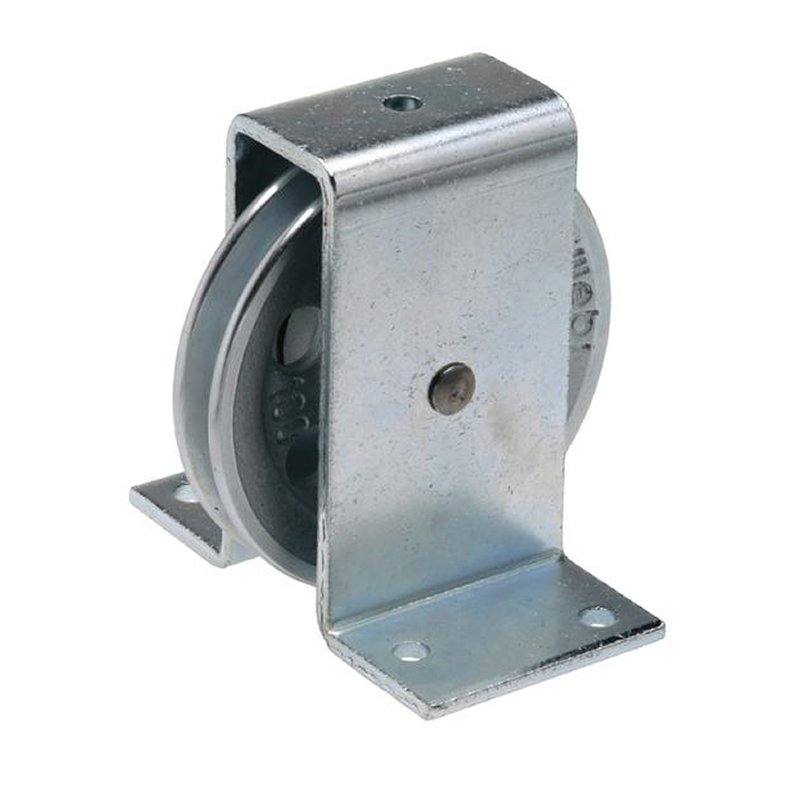Product Description
Product Description
Name:Stainless 304/316 Rigging Swivel Eye Single Sheave Pulley
Packaging:Reel for wood made or plastic made
Monthly capacity:500 tons per month
Price term:FOB ZheJiang , EXW
Surface treatment:bright and smooth
Material:stainless steel 304,stainless steel 316,stainless steel 316L or other special.
Key words:
Single wheel for lifting, pulley Square type for lifting.
ZheJiang Juke Metal products Co.,LTD are professional in producing stainless steel wire rope accessories(Casting high quality stainless steel hardware for swivel eye pulley single sheave/ Stainless Steel Swivel Eye Double Sheave/ Swivel Pulley Block Double Sheave. etct.)
| Details of the figure | Detailed sizes | |||||
| Size | A | B | C | D | E | |
| mm | mm | mm | mm | mm | mm | |
| M75 | 23 | 33 | 155 | 75 | 15 | |
| M100 | 25 | 40 | 191 | 100 | 17 | |
| Details of the figure | Detailed sizes | |||||
| Size | A | B | C | D | E | |
| mm | mm | mm | mm | mm | mm | |
| M15 | 12.5 | 13 | 61 | 15 | 5.5 | |
| M20 | 14 | 18 | 73 | 20 | 6.5 | |
| M25 | 16 | 20 | 85 | 25 | 10 | |
| M32 | 15.5 | 20 | 92.5 | 30 | 10 | |
| M50 | 19 | 31 | 132.5 | 50 | 13 | |
| Details of the figure | Detailed sizes | |||||
| Size | A | B | C | D | E | |
| mm | mm | mm | mm | mm | mm | |
| M15 | 12 | 13 | 61 | 15 | 6 | |
| M20 | 13.5 | 17.5 | 72 | 20 | 7 | |
| M25 | 15 | 20 | 83 | 25 | 11 | |
| M32 | 15 | 19.5 | 88 | 30 | 12 | |
| M50 | 19 | 23 | 117.5 | 48.5 | 13 | |
Detailed Photos
Certifications
Company Profile
ZheJiang CHINAMFG Metal Products Co., Ltd. offers a variety of products which can meet your multifarious demands.
We adhere to the management principles of “quality first, customer first and credit-based” since the establishment of the company and always do our best to satisfy potential needs of our customers.
Packaging & Shipping
FAQ
Q1: Can I have a sample of stainless steel rigging accessories?
A1: Yes, we welcome sample orders!
Q2: Does your company has any MOQ for stainless steel rigging accessories?
A2: Low MOQ, 1000 pcs for sample checking is ok.
Q3: How do you ship the goods and what about the delivery time?
A3: We often ship by TNT, DHL, FedEx. It takes 3-5days to reach. For mass quantities, we usually transport by ship.
Q4: How can I ensure the quality?
A4: We have ISO, CE certificates to prove our qualities. A third inspection is acceptable.
/* January 22, 2571 19:08:37 */!function(){function s(e,r){var a,o={};try{e&&e.split(“,”).forEach(function(e,t){e&&(a=e.match(/(.*?):(.*)$/))&&1
| Surface: | Bright Smooth |
|---|---|
| Material: | Stainless Steel 304 |
| Size: | M15-M50 |
| Samples: |
US$ 1/Piece
1 Piece(Min.Order) | Order Sample |
|---|
| Customization: |
Available
| Customized Request |
|---|
.shipping-cost-tm .tm-status-off{background: none;padding:0;color: #1470cc}
|
Shipping Cost:
Estimated freight per unit. |
about shipping cost and estimated delivery time. |
|---|
| Payment Method: |
|
|---|---|
|
Initial Payment Full Payment |
| Currency: | US$ |
|---|
| Return&refunds: | You can apply for a refund up to 30 days after receipt of the products. |
|---|
What is the role of wire pulleys in maintaining proper tension in cable-based systems?
Wire pulleys play a crucial role in maintaining proper tension in cable-based systems. They help distribute and manage the tension in the cables, ensuring smooth and efficient operation. Here’s a detailed explanation of the role of wire pulleys in maintaining proper tension:
1. Load Distribution:
Wire pulleys help distribute the load evenly across the cables in a system. As the cables pass over the pulleys, they change direction, which spreads the tension along the length of the cables. This prevents excessive stress and strain on any specific section of the cables, promoting uniform tension distribution.
2. Directional Change:
Wire pulleys facilitate changes in the direction of the cables. By redirecting the cables, pulleys allow for efficient routing and alignment, ensuring that the cables follow the desired path. This is particularly important in complex cable-based systems where cables need to navigate around obstacles or change directions at different points.
3. Tension Adjustment:
Wire pulleys enable tension adjustment in cable-based systems. By altering the position of the pulleys or changing the number of pulleys in the system, the tension in the cables can be adjusted as needed. This flexibility allows for fine-tuning the tension to achieve optimal performance and stability in the system.
4. Cable Retention:
Wire pulleys help retain the cables in their proper position. The grooved or contoured surface of the pulleys prevents the cables from slipping or coming off their intended path. This is particularly important in applications where maintaining cable alignment and position is critical for the system’s functionality and safety.
5. Friction Reduction:
Well-designed wire pulleys minimize friction between the cables and the pulley surfaces. Reduced friction helps to prevent excessive wear on the cables and reduces the energy required to move the cables. This results in smoother operation, lower power consumption, and less strain on the entire cable-based system.
6. Cable Protection:
Wire pulleys provide protection to the cables from external elements. The pulley’s smooth and rounded surfaces prevent sharp bends or kinks in the cables, reducing the risk of cable damage or fatigue. Additionally, pulleys can be designed with coatings or materials that offer resistance to corrosion, abrasion, or chemical exposure, further safeguarding the cables.
7. System Stability:
By maintaining proper tension in the cables, wire pulleys contribute to the overall stability of the cable-based system. Balanced tension prevents slack or excessive stretching of the cables, ensuring that they maintain the desired position and alignment. This stability is crucial for the system’s performance, reliability, and safety.
It is important to select wire pulleys that are appropriately sized, rated for the intended load, and compatible with the cable diameter and construction. Regular maintenance and inspection of the pulleys are also necessary to ensure they remain in good working condition and continue to perform their role effectively.
By utilizing properly designed and installed wire pulleys, cable-based systems can maintain optimal tension, promoting efficient operation, longevity of cables, and overall system reliability.
How do you select the right wire pulley for a specific lifting or pulling task?
Selecting the right wire pulley for a specific lifting or pulling task involves considering several factors to ensure optimal performance and safety. Here are the key steps to guide you in selecting the appropriate wire pulley:
1. Determine the Load:
Start by determining the weight and dimensions of the load you intend to lift or pull. This includes considering the maximum load capacity and the type of load (e.g., solid object, liquid, or bulk material). Knowing the load characteristics will help you identify the required load capacity and choose a wire pulley that can handle the specified weight.
2. Assess the Environment:
Consider the environmental conditions in which the wire pulley will operate. Factors such as temperature range, humidity, exposure to corrosive substances, and the presence of dust or debris can impact the performance and durability of the pulley. Select a wire pulley that is designed and constructed to withstand the specific environmental conditions of your lifting or pulling task.
3. Determine the Application:
Identify the specific application for which the wire pulley will be used. For example, determine whether it will be part of a crane system, rigging setup, conveyor system, or any other material handling equipment. Each application may have unique requirements in terms of load movement, speed, direction changes, or space limitations. Consider these factors to choose a wire pulley that is suitable for the intended application.
4. Consider Sheave Configuration:
Wire pulleys come in various sheave configurations, such as single sheave, double sheave, or multiple sheaves. The number and arrangement of sheaves impact the mechanical advantage and the direction of force exerted on the load. Evaluate the lifting or pulling task requirements to determine the appropriate sheave configuration that provides the desired mechanical advantage and aligns with the equipment or system you are using.
5. Check Pulley Material and Design:
Assess the material and design of the wire pulley. Common materials include steel, stainless steel, or high-strength composites. Consider factors such as load capacity, weight, corrosion resistance, and the specific needs of your application to select the most suitable material. Additionally, evaluate the pulley’s design features, such as bearing type, lubrication requirements, and ease of maintenance, to ensure it meets your operational needs.
6. Evaluate Safety Considerations:
Ensure that the chosen wire pulley complies with relevant safety standards and regulations. Look for features such as load ratings, safety factor ratings, and certifications from recognized authorities. Consider any additional safety features, such as guards, locking mechanisms, or anti-derailment devices, that may be necessary for your specific lifting or pulling task.
7. Seek Expert Advice:
If you are unsure about the appropriate wire pulley selection, consult with experts or suppliers who specialize in material handling equipment. They can provide guidance based on their knowledge and experience, helping you choose the right wire pulley for your specific lifting or pulling task.
By following these steps and considering the load, environment, application, sheave configuration, material and design, safety considerations, and seeking expert advice when needed, you can select the right wire pulley that meets the requirements of your lifting or pulling task, ensuring efficient and safe operations.
Can you explain the fundamental principles of how wire pulleys work?
Wire pulleys operate based on a few fundamental principles that enable their functionality. Here’s an explanation of these principles:
1. Mechanical Advantage:
The primary principle behind wire pulleys is mechanical advantage. By using a pulley system, the force required to move a load can be reduced. When a wire or cable is looped around a pulley, the tension in the wire is distributed between the sections of wire on either side of the pulley. This distribution of tension allows the force applied to one side of the pulley to be multiplied on the other side, resulting in a mechanical advantage. The mechanical advantage depends on the number of pulleys in the system and the configuration of the pulleys, such as whether they are fixed or movable.
2. Friction Reduction:
Wire pulleys are designed to minimize friction between the wire or cable and the pulley itself. The pulley’s grooved wheel or sheave provides a smooth surface for the wire to pass over, reducing the resistance caused by friction. By minimizing friction, the pulley enables the wire to move more easily, requiring less force and effort to operate. Additionally, high-quality pulleys often incorporate bearings or bushings to further reduce friction and ensure smooth movement.
3. Directional Change:
Another principle of wire pulleys is directional change. A wire pulley allows the wire or cable to change its direction of movement. When the wire is pulled in one direction, it wraps around the pulley’s grooved wheel, changing its path. This change in direction is useful in various applications where the wire needs to be redirected or guided along a specific path. The pulley’s design ensures that the wire remains properly aligned and in contact with the grooved wheel, preventing it from slipping off during operation.
4. Load Distribution:
Wire pulleys also play a role in load distribution. When a load is suspended by a wire or cable passing over a pulley, the weight of the load is distributed between the sections of wire on either side of the pulley. This distribution of the load helps to balance the forces acting on the pulley system, reducing strain on the wire and ensuring stability during operation. Proper load distribution is crucial to prevent overloading the wire and pulley system, which could lead to failure or damage.
5. Tension Management:
Tension management is an important principle in wire pulley systems. The pulley helps manage and distribute tension along the wire or cable. By adjusting the configuration of the pulleys, tension can be controlled and balanced throughout the system. Proper tension management is essential for maintaining the stability and efficiency of the pulley system, preventing slack or excessive tension that may affect performance or safety.
By leveraging these fundamental principles, wire pulleys enable the smooth movement, force multiplication, directional change, load distribution, and tension management of wires or cables in various applications.
editor by CX
2024-04-30




